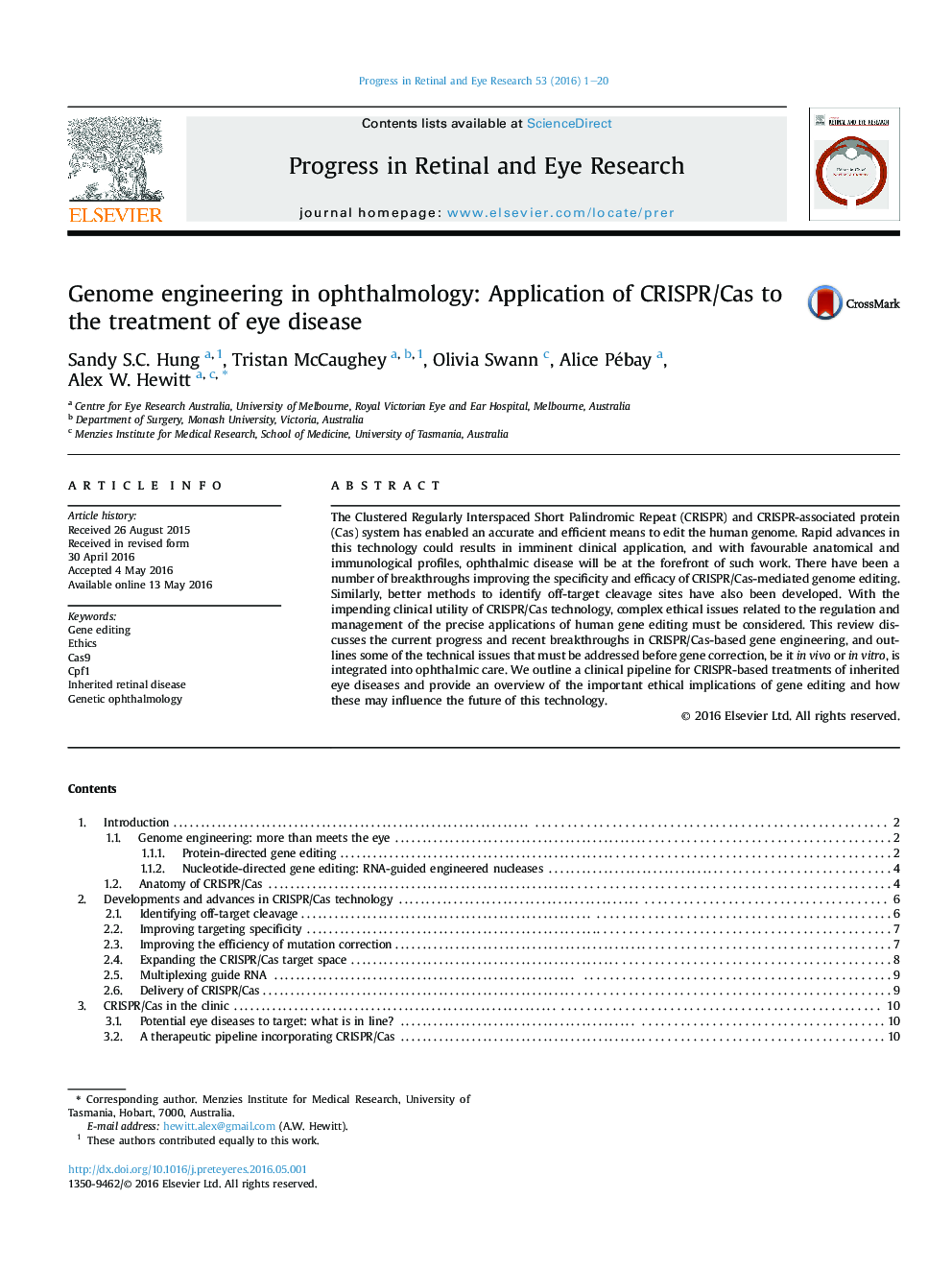| Article ID | Journal | Published Year | Pages | File Type |
|---|---|---|---|---|
| 4031888 | Progress in Retinal and Eye Research | 2016 | 20 Pages |
•Current progress in human gene editing highlighting recent breakthroughs is outlined.•We describe the pertinent technical barriers to clinical translation of gene editing.•The utility of CRISPR/Cas in an ophthalmological context is explored.•The ethical implications of contentious applications of CRISPR/Cas are examined.
The Clustered Regularly Interspaced Short Palindromic Repeat (CRISPR) and CRISPR-associated protein (Cas) system has enabled an accurate and efficient means to edit the human genome. Rapid advances in this technology could results in imminent clinical application, and with favourable anatomical and immunological profiles, ophthalmic disease will be at the forefront of such work. There have been a number of breakthroughs improving the specificity and efficacy of CRISPR/Cas-mediated genome editing. Similarly, better methods to identify off-target cleavage sites have also been developed. With the impending clinical utility of CRISPR/Cas technology, complex ethical issues related to the regulation and management of the precise applications of human gene editing must be considered. This review discusses the current progress and recent breakthroughs in CRISPR/Cas-based gene engineering, and outlines some of the technical issues that must be addressed before gene correction, be it in vivo or in vitro, is integrated into ophthalmic care. We outline a clinical pipeline for CRISPR-based treatments of inherited eye diseases and provide an overview of the important ethical implications of gene editing and how these may influence the future of this technology.
